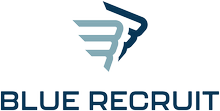A hiring process conducted discreetly to protect sensitive information—about the company, the role, and/or the candidates—until there’s mutual agreement. It’s often used when leadership changes, sensitive initiatives are underway, or when replacing underperforming employees without alerting internal or external stakeholders.
When it’s needed:
- Replacing leadership or senior staff without disrupting morale.
- Strategic hires, new product launches or projects in stealth mode.
- During mergers, acquisitions, restructuring, or any internal change that could cause speculation.
- To avoid overwhelming numbers of unqualified applicants.
Key Strategies & Best Practices for Maintaining Confidentiality
Clear Confidentiality Policies and Procedures
- Make sure everyone involved knows the confidentiality policy: what information is sensitive, who can access it, and what the expected behavior is.
- Use NDAs (non-disclosure agreements) for internal staff, hiring teams, external recruiters, and sometimes for candidates.
Limit Access to Information
- Only involve those who truly need to know (senior management, HR, select external recruiters).
- Use “need-to-know” basis sharing.
Use Secure Tools & Communication Channels
- Applicant Tracking Systems (ATS) with encrypted storage, strong access controls.
- Encrypted messaging or email services.
- If posting the job publicly, use anonymous or blind job postings to hide identifying company info.
Avoid Unnecessary Disclosure
- Don’t share candidate or role info with people outside the hiring circle.
- Keep conversations about confidential hires “off the record” when possible—outside large group discussions.
Ensure Secure Storage & Proper Disposal of Data
- Physical documents locked; electronic data password-protected, encrypted.
- After decision-making, dispose of unneeded applicant data responsibly (shred, securely delete).
Training and Oversight
- Regular training for HR, hiring managers, and anyone involved in recruitment.
- Audits or checks to ensure confidentiality rules are being followed.
Benefits of Confidential Recruitment
- Protects internal morale: Prevents rumors, unrest or anxiety among existing staff if senior role changes are prematurely revealed.
- Preserves competitive advantage: Especially with projects or initiatives that are strategic or sensitive.
- Controls narrative and reputation: Allows the organization to manage how and when information becomes public.
- Better candidate experience: Candidates, especially those currently employed elsewhere, can explore opportunities without risking exposure.
Risks & Challenges
- Smaller candidate pool: Some candidates prefer transparency and may avoid applying for roles posted very discreetly.
- Possibility of leaks: Even with precautions, accidental disclosures are possible (emails, metadata, rumor spread).
- Higher cost or longer timelines: Discretion often means more careful, slower processes and investments in secure tools or third-party agencies.
Role of Confidential Recruitment Services & Agencies
- Specialized firms help orchestrate confidential searches: advertising (if necessary), sourcing, interviewing, vetting candidates discreetly.
- They understand the protocols, legal implications, and have networks and tools to help find talent without compromising privacy.
- They guide companies through the full process: from identifying the need, defining the candidate profile, handling interview logistics, and managing offers— all while keeping things under wraps.
Summary
Confidential hiring is a strategic approach that values discretion to protect both organizational integrity and candidate privacy. The successful execution of confidential recruitment depends on clear policies, limited access, secure tools, disciplined communication, and careful data handling. While it comes with trade-offs—like cost, potential delays, or narrower candidate reach—its benefits in certain high-sensitivity situations (leadership changes, sensitive projects, internal transitions) often outweigh the downsides.


